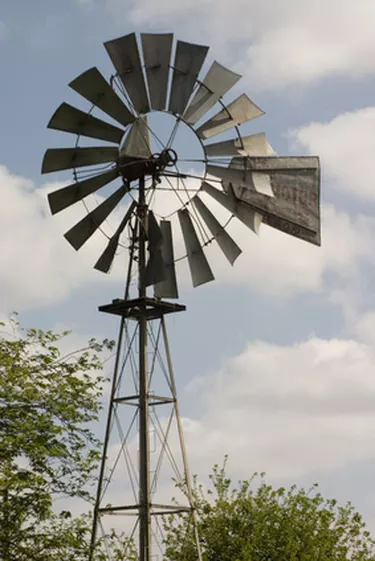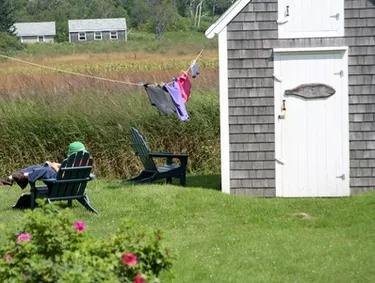
The thought of living off the land, self-reliant and self-sufficient, is still part of the American Dream. Whether you want to live off the grid because of an economic necessity, a deep desire to live close to the land or to reduce your carbon footprint, it is a goal that many people are seeking to implement in their lives. With careful planning, research and creative thinking, it is possible for the average person to live at least partially off the grid.
Preparing to Live Off the Grid
Video of the Day
Step 1
Research the concepts of passive solar energy at the library and on the Internet. It is possible to integrate many of the principles of passive solar into your current home. A well insulated, south-facing home heated by the sun, provides a comfortable living space without using a lot of energy.
Video of the Day
Step 2

Reduce your energy consumption. Go back to old-fashioned methods of saving energy. Use a clothesline instead of a dryer. Use wood or propane for cooking and supplemental heating in your home. Hang sheer curtains layered with heavy drapes over windows to let the sun in during the day and prevent drafts at night. Put a heavy comforter on your bed. Wear sweats in the winter and cotton in the summer.
Step 3
Choose an alternative energy source appropriate to your home. Where you choose to live determines what kind of alternative power is a practical source for electricity. For example, a sunny desert provides many days of sun for solar power. A windy location is ideal for wind power. A running stream provides hydroelectric power.
Implement The Plan
Step 1
Search the Internet, auction sites, salvage warehouses, public surplus and the local freebie ads for building supplies, solar cells, insulation, windows and other energy efficient items. Think creatively—recycle, reuse and re-purpose is your mantra.
Step 2
Prepare the battery array for storing the energy generated by the sun, wind or water. Deep cell batteries are large, heavy and expensive. However, golf cart batteries are also deep cell batteries and by wiring them in pairs, you have the same storage capacity at a much cheaper price.
Step 3

Build your own solar system using plans from the Internet. Purchase the solar cells directly from the manufacturer or from online auctions. Since you already reduced your energy consumption dramatically, you can install a smaller unit at a much lower cost.
Step 4
Obtain the parts needed for wind or water power. Both require an alternator, purchased used or homemade, a charge controller to control the flow of electricity, a voltage regulator and an emergency shut off switch. Wind power requires a tower with the alternator attached by a belt to blades made of metal, wood or PVC pipe. The wind spins the blades, providing power to the alternator. The alternator generates an electric current which is stored in the deep cell batteries.
Step 5
Look for running water. A brisk little stream provides enough energy to power an energy-efficient home. Diverting water to run downhill, through a pipe equipped with a small water turbine, powers the alternator. In turn, the alternator generates free electricity.
Tip
LED lighting is more energy efficient than fluorescent bulbs. The Internet is a vast resource of do-it-yourself projects, including building your own solar panels and wind towers; recruit friends and family to help you with these projects.
Things You'll Need
Deep cell batteries
Solar cells
Alternator
Water turbine
Warning
Use caution with all electricity. Even a low voltage system can give you a severe shock. Carefully research local water regulations. Diverting water, even a small amount, can trigger fines by the local water resources board. Living off the grid is more than just saving energy. Carefully research food storage, water supplies and sanitation facilities before making any major decisions.